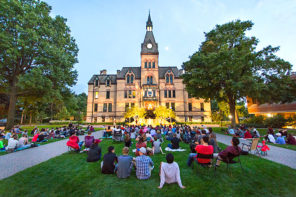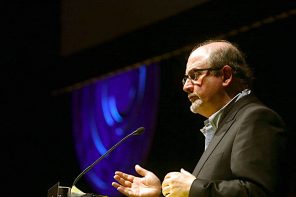After two years of planning and development, “The Hajj: Journey to the Heart of Islam” was launched this week at the British Museum. The major exhibition aims to uncover the mystery for both Muslims and non-Muslims about a spiritual journey that dates back to the 7th century AD. Publicized widely as a “first” in the West, the project does not come without hope and expectation in this post-9/11 era.
In recent years, attempts to capture the essence of the journey for a wider audience has been facilitated by the globalizing effects of the transnational media environment. Whether it was CNN making news history with its coverage of the Hajj live from Mecca, or the recent IMAX visual masterpiece that recounted the tales of 14th century explorer Ibn Battuta, the socio-historical significance of an exclusively Muslim journey has been increasingly relayed through an audio-visual experience.
But to accurately portray a phenomenon that belongs to contemporary times as much as it belongs to history requires a medium that goes beyond the audio-visual; ironically, a medium that captures the essence of the old English proverb: “If the mountain can’t come to Mohammed then Mohammed must go to the mountain.” The current exhibition presents such an opportunity since it is comprised of objects representing authentic moments from space and time. The potential for greatness in capturing the past and the present is immense, but can it be achieved? Does the media hype match the reality?
Rich artifacts from different eras and lands reflect the increasing geographic pull of the annual event that has grown from accommodating 20,000 pilgrims in the 1930s to nearly three million last year. The start of the exhibition features a Turkish map compiled in 1580 placing the Ka’bah, the black stone, as an epicenter of the world. The exhibition explores the various paths of journeys undertaken to reach the central fixture of Islam through manuscripts, photographs, textiles, relics, and what it means to be a haji (a pilgrim of the Hajj). Notable hajis represented in the exhibition include Lady Evelyn Cobbald, the first British woman to perform the rituals of Hajj. Two awe-inspiring highlights include one of the oldest copies of the Qur’an from the 8th century, and a visually striking red velvet tent from Egypt known as the Mahmal.
While the portrayal of the history of Hajj balances the spiritual with the material challenges met by the organizers and pilgrims, the same cannot be said for the contemporary accounts of the Hajj. During the launch of the exhibition, Director Neil MacGreggor, speaking of the contemporary pilgrimage, noted flatly that the “Hajj is one of the greatest logistical challenges.” This is matched by the treatment of a model of expansion plans of the Great mosque which neglects the specifics of how important historical sites will be replaced by skyscrapers and commercial centers. Instead the exhibition promotes the less provocative form of modernization in the form of contemporary art depicting the Ka’bah and worshippers through a magnet and iron filings.
Still, while the exhibition fails to capture the reality of modern Hajj, providing only a glossy and sanitized version, the widespread media coverage of the exhibition’s launch is worth remarking upon, especially when the post-9/11 divide between Western and non-Western civilizations is often presented as a clash in the mediascape.
In fact, the project has received widespread positive exposure in the mainstream Western press, unprecedented for an Islamic cultural subject matter. It has even featured prominently in the UK’s Daily Mail, widely regarded as fearmongering and ‘othering’ when it comes to the Muslim community. Positive reception of such cultural productions plays a significant role in shaping Western narratives of identity that are inclusive of Muslim culture and heritage.
With community engagement at the heart of the project, sincere efforts by the organizers have clearly been made to prevent a potential reaction from becoming the news. The project will undoubtably evoke a sense of pride among many Muslims who feel an affinity for the spiritual journey. However, emphasis on the socio-historical, mixed with neutrality towards the political, is an indication that the exhibition is aimed at a non-Muslim audience as it often succeeds in bridge-building; as Karen Armstrong states: “Prejudices about Islam will be shaken by this show.”




